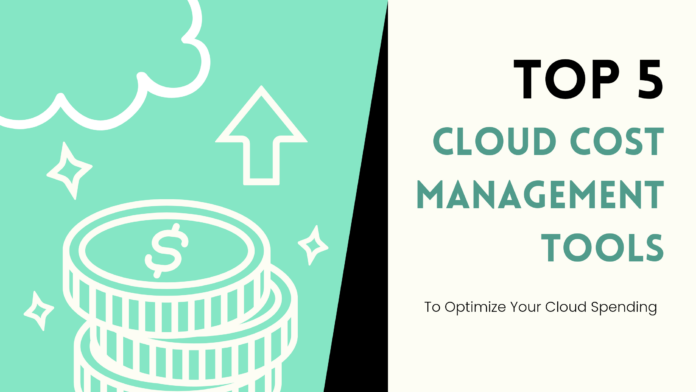By Chandresh Patel
Introduction
As more and more businesses migrate to the cloud, managing costs is becoming a critical concern. According to a recent report, organizations can see their cloud spending double within a few years if not monitored carefully. This rapid escalation in costs highlights the value of utilizing robust cloud cost management tools to prevent budget overruns and optimize cloud migration costs.
Cloud cost management tools help organizations manage their cloud expenditures effectively by tracking, analyzing, and optimizing their cloud costs. These tools help you understand how you spend, contributing to better resource allocation and budget planning. However, with so many options in the market, choosing the best cloud cost management tool for developers and IT teams can be a real challenge.
In this article, we will explore some of the widely used cloud cost management tools and their features, strengths, and limitations to help organizations make informed decisions about which tools best suit their cloud cost optimization needs.
Top 5 Cloud Cost Management Tools to Use
Here’s a closer look at some of the most popular cloud cost management tools used worldwide, each with its unique features, pros and cons.
1. AWS Cost Explorer
AWS Cost Explorer allows users to visualize and control AWS spending, offering valuable insights to manage costs effectively.
Key Features:
- Cost and Usage Reports: This tool helps you quickly generate reports that track your spending patterns and trends over time.
- Budgeting and Forecasting: You can set budgets and get forecasts based on your historical data, which can be incredibly helpful for planning.
- Custom Cost Allocation: Cost Explorer allows you to allocate costs to specific projects or departments, making it simpler to track expenses and make informed decisions.
- Integration with AWS Services: Since it’s built for AWS, it integrates seamlessly with other services, providing real-time insights.
Pros:
- Integration with AWS services means you have immediate visibility of your costs.
- The user-friendly interface lets you quickly identify spending anomalies before costs get out of control.
Cons:
- It’s limited to AWS, which might not be ideal if you use multiple cloud providers.
- Some features are complex for new users, as they may not be used to AWS.
2. Microsoft Azure Cost Management + Billing
Designed for Azure users, this tool tracks expenses and helps optimize budgets within the Azure ecosystem.
Key Features:
- Cost Tracking and Analysis: With detailed breakdowns by service, This tool lets you monitor your spending in real time.
- Budgeting and Forecasting: It allows you to create budgets and alerts you whenever you cross your budget limits.
- Resource Optimization Recommendations: By identifying underutilized resources it provides you with recommendations to reduce costs.
- Integration with Azure Services: As a native tool, it integrates easily with your Azure resources for accurate cost tracking.
Pros:
- It has a beginner-friendly interface.
- The budgeting features provided are robust, empowering you to plan ahead effectively.
- You can create customizable reports focused on important metrics.
Cons:
- This tool may not be as effective for organizations using multiple cloud providers since it’s mainly focused on Azure.
- Some features can be complex and require technical expertise.
3. Google Cloud Platform (GCP) Billing Reports
GCP Billing Reports provide easy access to monitoring cloud expenses and analyzing spending patterns on Google Cloud.
Key Features:
- Detailed Billing Reports: Allows you to generate comprehensive reports that help you understand your costs across projects.
- Budget Alerts: This tool lets you set budgets and receive alerts when you’re nearing your spending limits to avoid overspending.
- Cost Breakdown by Services: It allows you to analyze costs at granular levels and allocate resources more efficiently.
- Integration with BigQuery: You can even use Google BigQuery with this tool for custom analytics and a deeper understanding of your financial data.
Pros:
- This tool has an easy-to-use interface, which makes it accessible to anyone, regardless of their technical expertise.
- It allows for flexible cost allocation that can help you track expenses by project or department.
- The budget alerts keep you on top of your spending and prevent unexpected costs.
Cons:
- This tool lacks some of the more specialized or complex features that third-party tools might offer.
- To access it, you will need a Google Cloud account, which may not be feasible for organizations using multi-cloud services.
4. CloudHealth by VMware
CloudHealth is ideal for managing costs across multi-cloud environments, offering deep insights into resource usage and performance.
Key Features:
- Multi-cloud Cost Tracking: This feature lets you monitor spending across various cloud providers, giving you a holistic view of your expenses.
- Resource Optimization Recommendations: This tool leverages AI-driven insights to identify opportunities for savings and provides recommendations accordingly.
- Customizable Reporting: This lets you create dashboards tailored to your organization’s needs for focused analysis and reporting.
- Integration with Cloud Services: Connects seamlessly with AWS, Azure, Google Cloud, and many other cloud platforms.
Pros:
- This tool’s ability to manage costs across different cloud platforms is a huge advantage, as most tools can only manage costs for one platform.
- This tool offers customizable dashboards that help improve usability, enabling you to focus on what matters most and providing various other benefits.
Cons:
- For new users, setting up this tool may be challenging.
- Some advanced features require additional training, posing a challenge for startups or small organizations.
5. Spot by NetApp
Spot by NetApp specializes in real-time resource optimization, automating cloud workload management to save costs.
Key Features:
- Real-time Resource Optimization: This tool automatically adjusts your resources based on demand and usage patterns.
- Automated Workload Management: It helps you simplify your cloud workload management with automation that responds to changing conditions, enhancing operational efficiency.
- Cost-saving Recommendations: Spot provides actionable insights to improve cost efficiency and effectively utilize resources.
- Integration with Kubernetes: If you’re using Kubernetes, this tool integrates seamlessly with your cloud infrastructure.
Pros:
- It’s one of the best tools for optimizing resource usage, leading to significant cost savings.
- Great for teams working with containerization and needing dynamic resource allocation.
Cons:
- This tool is primarily designed for Kubernetes environments, which might limit its use for traditional workloads.
- Initial configuration can be technical, so you might need technical know-how to set it up effectively.
Conclusion
With organizations continually moving towards cloud technology, effective cost management becomes critical. The right cloud cost management tools can significantly improve tracking spending, optimizing resources, and saving money.
However, if you don’t know what tool to choose or have a specific tool in mind but don’t know how to use it, you can consider partnering with a trusted company that provides cloud support services. They can provide valuable guidance and expertise to ensure you get the most out of your chosen solution.





































